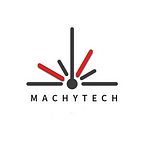The urge for package delivery in the Netherlands has known a significant increase over the past few years. The total amount of packages delivered by PostNL, the major client of Prime Vision, has increased in 2019 and 2020 with 13 and 25 percent respectively. The sorting process can easily be automated due to the repetitive nature of the job, however workers will continue to be important in sorting facilities. These workers will have to cooperate with robots as more automated machines find their way into these facilities. We hypothesized that adding higher information density intention feedback on robots would allow for safer and more efficient communication between workers and robots. For workers to effectively perform their jobs, they need to be able to work efficiently and safely together with these machines.
To allow for smooth, efficient and safe cooperation between workers and autonomous robots, currently methods using LED light or sounds are used to inform the workers. These methods do have its flaws, since they are only able to pass on a limited amount of information. This is why MachyTech suggests ROSE as an alternative to be able to inform the workers about status and intentions of autonomous machines. The goal is to influence the behaviour of the workers in such a way the efficiency and safety of the work environment increases.
During the development process MachyTech will focus on making in-house hardware, user-interface and embedded software in order to assure an increase in safety and efficiency. ROSE will convert the intentions of the machine into a real-time digital signal, which will be projected onto the ground in front of the machine.
The reason to develop ROSE in-house is mainly due to a lack of laser systems with the following aspects:
- Real time rendering. (Virtual Reality)
- Netwerk connection. (IoT applications)
- Small device with a low price.
The used DLP technique is a combination of a micro-mirror device with a controller, both of which are developed by Texas Instruments.
MachyTech will use these chips and add custom hardware during the development stage. In the embedded software MachyTech will program various virtual reality scenes. The user-interface will allow the user to adjust the scenes and settings of ROSE to his own liking.
Together with Prime Vision a robot system with ROSE will be developed at VDL in Helmond. This will allow for quick development of ROSE, since the VDL workplace will give constant feedback from the workers. MachyTech will give on-site support for the robots as well as ROSE.
ROSE, make your autonomous machines work with people.
